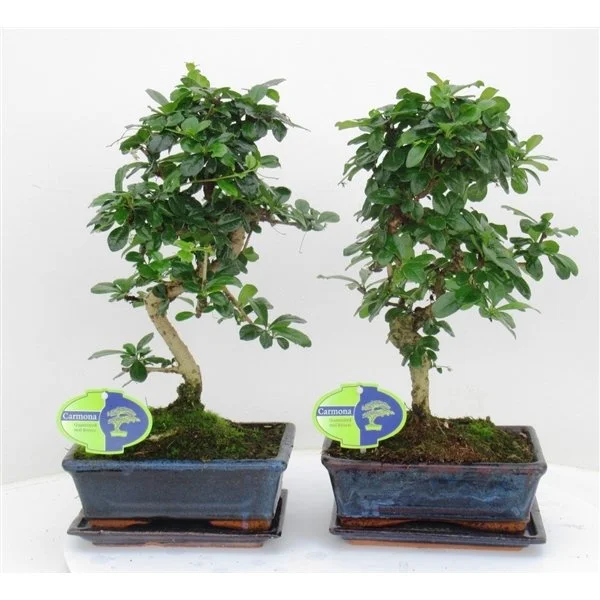Ehretia microphylla 35cm
Ehretia microphylla 35cm
Ehretia microphylla 35cm
Bonsai is the art of cultivating miniature trees in pots, emulating the shape and scale of their full-sized counterparts. Originating in Japan, this practice blends horticultural techniques with aesthetic design, creating living sculptures that require careful shaping and maintenance. Bonsai trees can be cultivated from various species, each offering unique characteristics.
Caring for a bonsai requires attention to detail and a commitment to the plant's health and aesthetics. Here are essential aspects to consider:
Watering
Frequency: Water your bonsai when the soil begins to dry out. This may vary depending on the species, season, and environmental conditions.
Method: Use a fine nozzle watering can to ensure an even distribution of water. Avoid letting the plant sit in standing water.
Light
Placement: Most bonsai thrive in bright, indirect sunlight. Position them near a window where they can receive adequate light but are protected from harsh midday sun.
Species Consideration: Adjust light exposure based on specific species requirements, as some may tolerate more sun than others.
Soil
Composition: Use a well-draining bonsai soil mix, typically containing a blend of akadama, pumice, and lava rock. This promotes drainage and aeration.
Repotting: Repot every 1-3 years, depending on growth rates. This refreshes the soil and encourages healthy root development.
Pruning
Technique: Regularly prune both branches and roots to maintain shape and encourage growth. Use sharp, clean tools to make precise cuts.
Timing: Prune in the growing season for optimal recovery. Late winter or early spring is often recommended for most species.
Fertilising
Schedule: Apply a diluted, balanced fertiliser during the growing season (spring to autumn) to provide essential nutrients.
Type: Liquid fertiliser is often preferred, but granular types can also be used depending on the species and potting setup.
Pest and Disease Management
Observation: Monitor your bonsai regularly for signs of pests or disease. Common issues include aphids, spider mites, and root rot.
Treatment: Use appropriate organic or chemical treatments as necessary, following the manufacturer’s instructions for specific pests.
Temperature and Humidity
Environment: Maintain a stable temperature appropriate for your bonsai species. Most prefer environments between 15°C to 25°C.
Humidity: Increase humidity by placing a tray of water near the bonsai or using a humidity dome during dryer months.
Additional Tips
Training Techniques: Explore wiring and other techniques to shape the bonsai. Ensure not to wire too tightly to avoid damage.
Patience: Remember that bonsai cultivation is an art that takes time. Progress may be slow, but persistence yields beautiful results.
By consistently following these care guidelines, you can foster a healthy and visually appealing bonsai that thrives for years to come.

